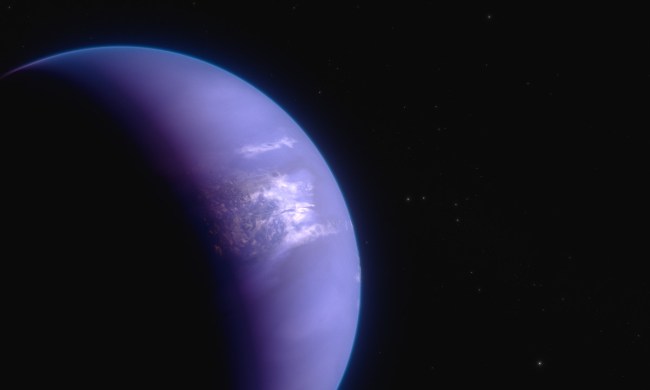Researchers have made a rare detection of clouds in the atmosphere of an exoplanet, spotting puffs of unknown composition floating above the fluffy, puffy planet WASP-127b.
Planet WASP-127b was in the news in 2018 when researchers from the Instituto de Astrofísica de Canarias (IAC) discovered it was one of the least dense exoplanets ever found and was unlike anything in our solar system.

The planet is a great candidate for researching exoplanet atmospheres because it is so large and “fluffy.” It is 1.3 times larger than Jupiter, but just one-fifth of its mass. And because it orbits very close to its host star, a year there lasts just four days and its surface temperature rises up to 1100 degrees Celsius. That makes it a type of planet called a “hot Saturn.”
Now, researchers have used data from the Hubble Space Telescope along with a spectroscopy instrument — the Echelle SPectrograph for Rocky Exoplanets and Stable Spectroscopic Observations (ESPRESSO) at the European Southern Observatory’s Very Large Telescope in Chile — to identify clouds that are floating in the planet’s atmosphere. They also found sodium in the atmosphere, but at a lower altitude than was expected.
“We don’t yet know the composition of the clouds, except that they are not composed of water droplets like on Earth,” said lead author Romain Allart. “We are also puzzled about why the sodium is found in an unexpected place on this planet. Future studies will help us understand not only more about the atmospheric structure but about WASP-127b, which is proving to be a fascinating place.”
There are even more oddities to WASP-127b though. Not only does it orbit in the opposite direction to its star, but it also orbits in an unusual plane rather than the typical equatorial plane.
“Such alignment is unexpected for a hot Saturn in an old stellar system and might be caused by an unknown companion,” said Allart. “All these unique characteristics make WASP-127b a planet that will be very intensely studied in the future.”
The research is published in the journal Astronomy & Astrophysics.



